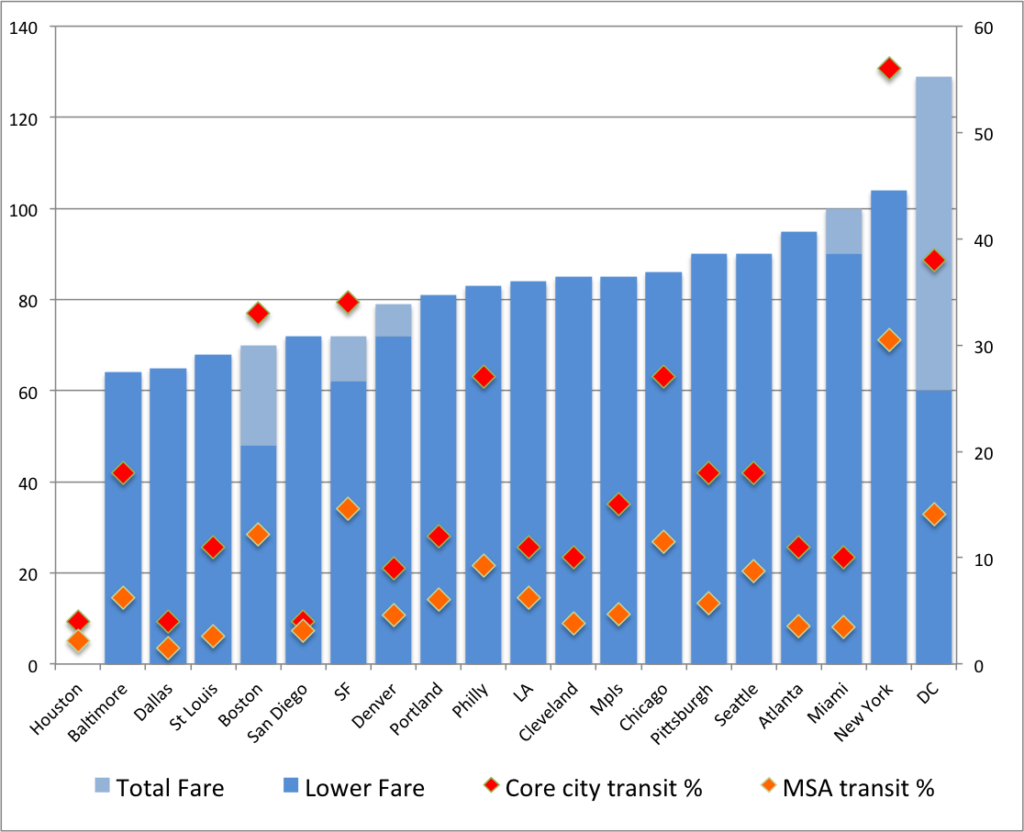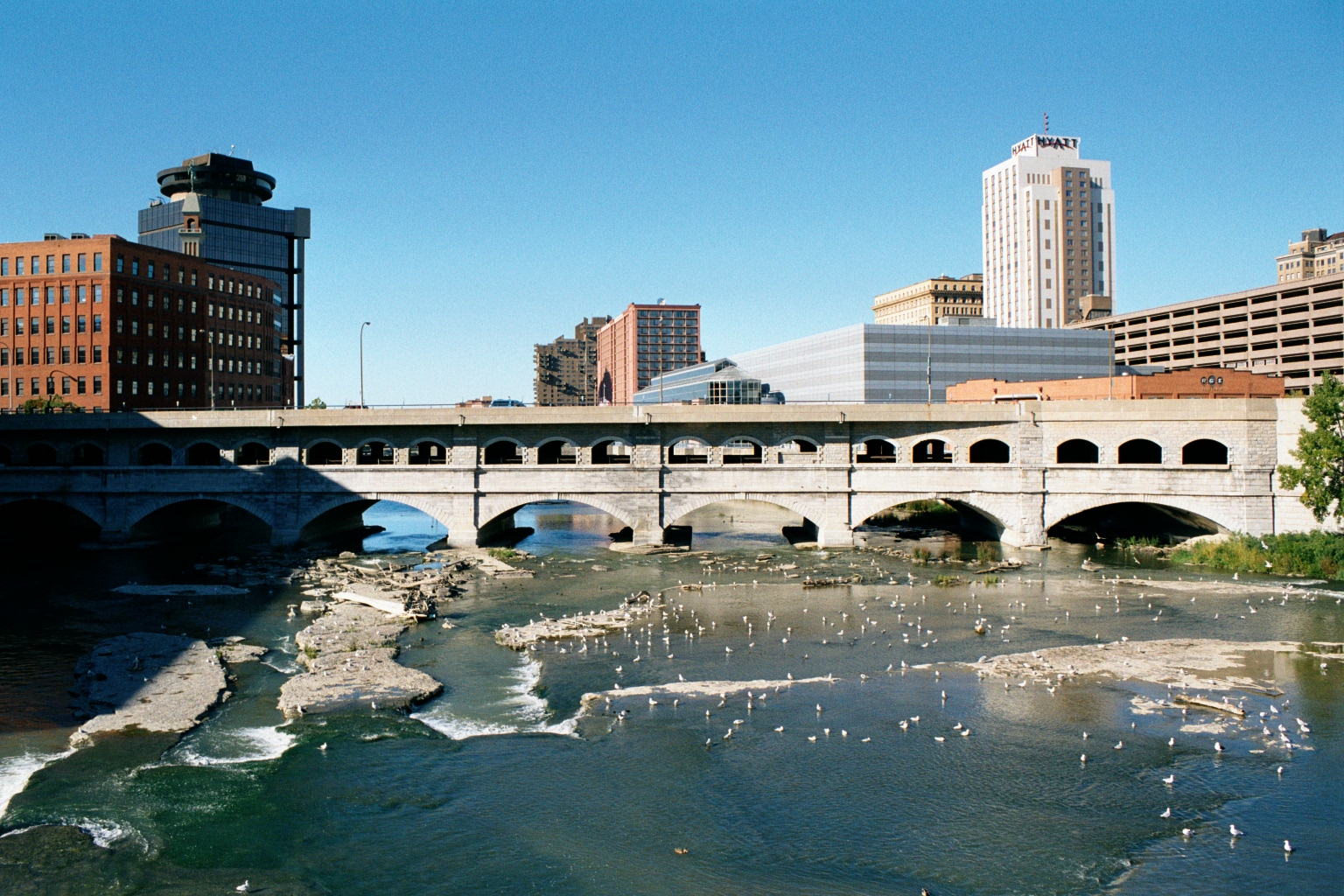After the success of the Viaduc des Arts in Paris, some New Yorkers looked at their community and realized they had a somewhat similar asset, and didn’t really know what to do with it. Was the structure a blight—as it was seen by the Giuliani administration, which wanted to tear it down—or something worth saving? Like the Viaduc Des Arts, it was nearly 30 years between the abandonment of rail service and the opening of the structure to the public, but the results, in the month which it has been open, have been similarly positive.
The elevated railroad south from 34th street has an interesting history, following the use of the west side of Manhattan. It was first built, at-grade, in the 1850s. Along the Hudson were dozens of docks, and until the 1960s, New York was one of the busiest ports in the world. By the 1920s, the railroad across surface streets on the west side was the cause of so much congestion that a proposal was made to elevated the tracks south of the yards at Penn Station, and by 1934, the work had been completed: a two-track railroad (which was, in places, wider) extended for a couple of miles along the docks.
The line ended at the Saint John’s Park terminal, which was built in the 1860s, and rebuilt once the elevated line was completed. The complex stood near the current Canal Street IRT and IND (1 and ACE) subway stations, a few blocks east of the Hudson. The rebuilt station truncated the line a bit, and it now ended at Spring Street, about a block east of the river—close to the docks—although it retained the name. The facility was impressive, with nearly a million square feet of floor space, eight railroad tracks, dozens of truck bays, customs offices and a connection to the docks. Speed would be improved as well; before the grade separation, trains were limited by law to six miles per hour and had to be preceded by a man on horseback. The New York Central published a pamphlet extolling the virtues of the new line.
In addition to the services to the docks, the line served factories and, especially, the meatpacking district, encompassing more than 250 slaughterhouses. The New York Central touted the relationship of the line to destinations by both ship and railroad (assuredly because they were the only possible provider of service) for factory locations, and, indeed, several were built, some of which straddled the line. During World War II, the line was used heavily to service these various industries. Within 35 years, it would be abandoned.
The decline of the West Side Line was not only attributable to the automobile, although it definitely had an effect. With automobiles and trucks, of course, production no longer needed to be as centralized. In other words, it didn’t have to be on the island of Manhattan. In addition, trucks could more easily make deliveries to Manhattan (although it is still notoriously hard to deliver goods to the island, even the milk in The City expires earlier than elsewhere, due, ostensibly, to longer periods when it is out of refrigeration during transport).
But there were other factors at work in the demise of the Line peculiar to it (many railroads in the country saw major declines with the coming of the car and truck). One was the improvements made in refrigeration. In the first half of the 20th century, meat processing was best done as close to the point of consumption as possible, as refrigeration was rather rudimentary. However, major strides were made in refrigerated trucks and rail cars that by the end of the war, it was easier to process meat outside the city and ship the smaller product—just the meat—in. Thus, of the 250 slaughterhouses which once operated in the meatpacking district, only a couple dozen remain.
The other factor at work was containerized shipping. In “The Box” Marc Levinson details how shipping was extremely inefficient and costly after World War II, especially in major break-in-bulk points like New York City. Shipments would arrive on trains and have to be unloaded, sorted and then reapportioned in to ships for overseas travel. Improvements in efficiency were frowned upon, especially if they would cost the union jobs. New York still accounted for a good deal of shipping until the advent of the container. Within 20 years, the New York docks were moribund, as shipping had shifted to locations which could process metal containers, which were easily lifted from trains and truck to ships. The Saint John’s Park Terminal, at the cutting edge of integrated shipping little more than a generation before, had outlived its usefulness. Factories closed up shop, and the meatpacking district became a den for prostitution, transvestites and others seen as socially undesirable.
It was about the same time that the railroad ceased to be used—the last three carloads were delivered in 1980 and it fell in to disuse. Local residents lobbied for it to be torn down in the 1980s, and it may well have been, had the city not been in such dire financial straits that a demolition and environmental cleanup were not in the cards. By the time the city was solvent enough to tear down the structure, in the 1990s, a small group of devotees and urban explorers—loosely organized as The Friends of the High Line lobbied against its demolition. Thus, while portions were torn down, it was kept intact north of Gansevoort Street. Some of the explorers of the structure, such as Joel Sternfeld (whose book of images from the line is now out of print and fetches high sums on the open market) introduced the structure to the masses, and Giuliani was unable to knock it down. Michael Bloomberg was more supportive of the project, the neighborhood through which the line runs had transformed from a den of vice to one of the trendiest parts of town, and fundraising began to open the structure to the public. The Design Build Network has a good history and description of this time frame of the structure.
Reaction to the project has generally been quite positive. The main detractors have not been those who wish it away, but those who lament the loss of the frontier aspect of the previously wild viaduct. Before it was completed, the High Line was open to a select few who climbed atop it, and wandered through a veritable prairie that was growing up in the middle of Manhattan. The current design tries to incorporate such aspects, keeping some of these plants and portions of the abandoned track, but with demarcated walkways and thousands of visitors, it is a different space entirely. Still, it was not feasible to let the structure rust in to oblivion, and keeping it as a public space is surely preferable to tearing it down, and having the landscape become a sea of condos like any other in New York.
The High Line opened to the public last month. I have not been in New York City since, but it is most definitely a destination the next time I am there. It seems to be similar, at least in the above, to the Viaduc des Arts, although more minimalist in design. How it will continue to interface with the city in the future will be interesting: it is one of the less-developed parts of Manhattan, and still has a few undeveloped parcels facing the High Line. Whether these will ever open out on to the structure is questionable: it’s a rather controlled space (one that is closed at night, for example). Also interesting will be what happens underneath it. Still, it is one of the most exciting new public spaces in New York in some time.
(Part of an occasional series.)




